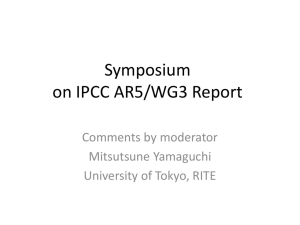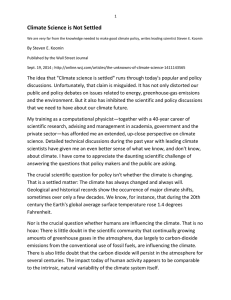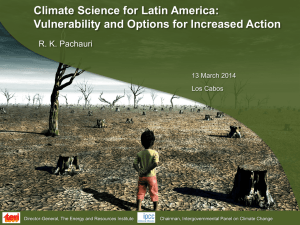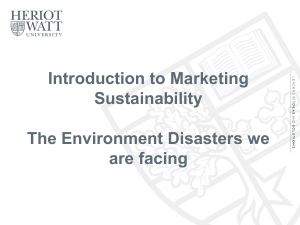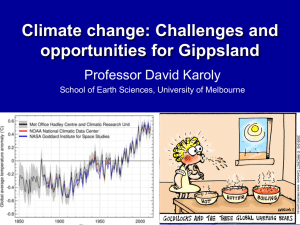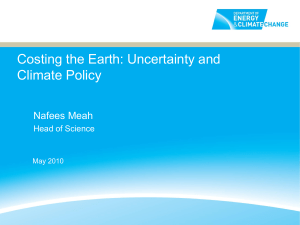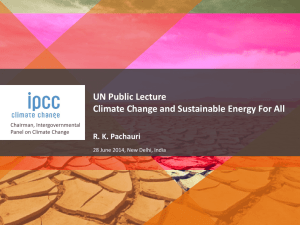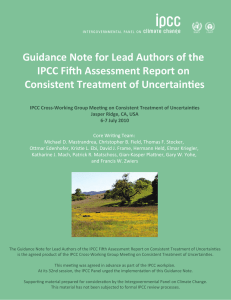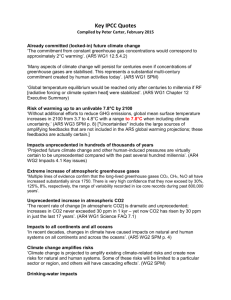An Uncertain Introduction
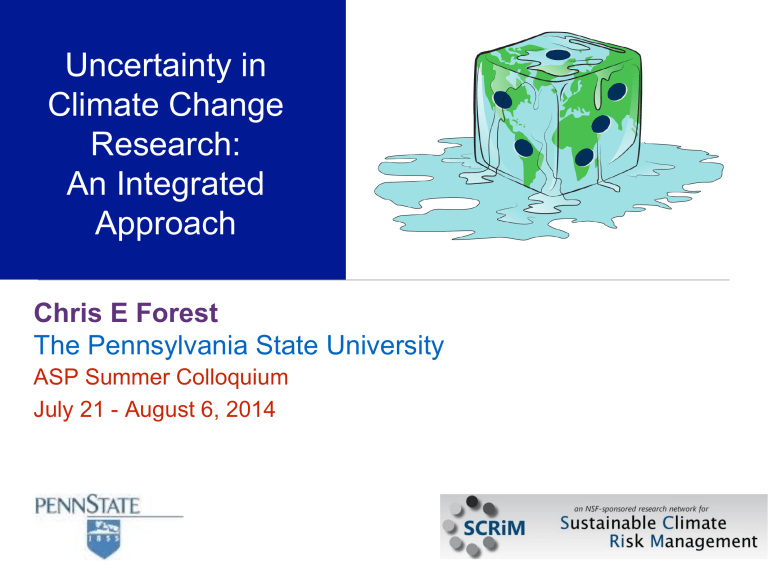
Uncertainty in
Climate Change
Research:
An Integrated
Approach
Chris E Forest
The Pennsylvania State University
ASP Summer Colloquium
July 21 - August 6, 2014
Who am I ??
• The “A-list” Mash-Up:
• A Physics & Math junky.
• A Professor of Climate Dynamics and Meteorology #PennState.
• A Co-PI on the Network for
Sustainable Climate Risk
Management (SCRiM).
• A pragmatist & realist.
• A biker-hiker-outdoor Dad.
• Twttr: @ChrisEForest
• Google+: ceforest67@gmail.com
• LinkedIn: ceforest@psu.edu
What are my goals?
• For this talk —
A brief introduction to uncertainty language and some things we “know” about climate change
• For this workshop —
• To teach and be taught by your cohort — your research, your interests, your backgrounds, your excitement of those that will lead the next generation
• For my research —
• To characterize and communicate the risks of climate change
What is this talk about?
• Introducing the language of uncertainty
• Introducing some “certainty” about climate change
Types of Uncertainty
• Structural/Parametric
• Aleatoric/Epistemic
• Deterministic/Stochastic
• Quantifiable/Non-quantifiable
Characterizing Model Uncertainty
• Multi-Model Ensembles — MMEs
• Perturbed Parameter/Physics Ensembles — PPEs
• Initial Condition Ensembles
MIPs: Model Intercomparison Projects
• GOAL: Assess Structural Uncertainty due to model structure & experimental design
• The 1 st : AMIP
• Atmospheric Model Intercomparison Project
• AGCM: Atmospheric General Circulation Models
• The 2 nd : CMIP
• Coupled Model Intercomparison Projects
• Atmosphere-Ocean GCMs [versions: 1/2/3/5/6]
• Then many more: CCMIP, PMIP, CFMIP, …
What do we “know” about anthropogenic climate change?
• Two key observations:
1. Greenhouse gases (GHGs) have increased since pre-industrial times (~1750CE) due to human activity.
2. Globally, surface temperatures have increased.
• Plus, we have multiple observational records that are consistent with these changes.
2. Globally, surface temperatures have increased.
“Each of the last 3 decades has been successively warmer than any preceding decade since 1850”
Years
(IPCC WG1 AR5 Figure SPM.1a)
IPCC AR5: Working Group 1
“Warming in the climate system is unequivocal”
(IPCC WG1 AR5 Figure SPM.1b)
Additional lines of evidence:
Observed precipitation changes
(IPCC WG1 AR5 Figure SPM.2)
Additional lines of evidence:
Observations of Snow Cover, Sea Ice Extent,
Ocean Heat Content, & Sea Level Change
(IPCC WG1 AR5 Figure SPM.3)
What do we “know” about anthropogenic climate change?
• Two key observations:
1. Greenhouse gases (GHGs) have increased since pre-industrial times (~1750CE) due to human activity. (e.g., Linda’s talk)
2. Globally, surface temperatures have increased.
• Plus, we have multiple observational records that are consistent with these changes.
• Fundamental science states that:
• Changes in GHGs disrupt the planet’s energy balance.
• The climate system responds by adjusting to this imbalance (albeit not uniformly).
• This basic premise is encoded in Climate Models.
Are the models predicting the past? Yes.
Land and Ocean Temperatures and
Sea Ice Area
Sea Ice
Ocean Heat Content
IPCC AR5 WG1: Figure SPM.6
